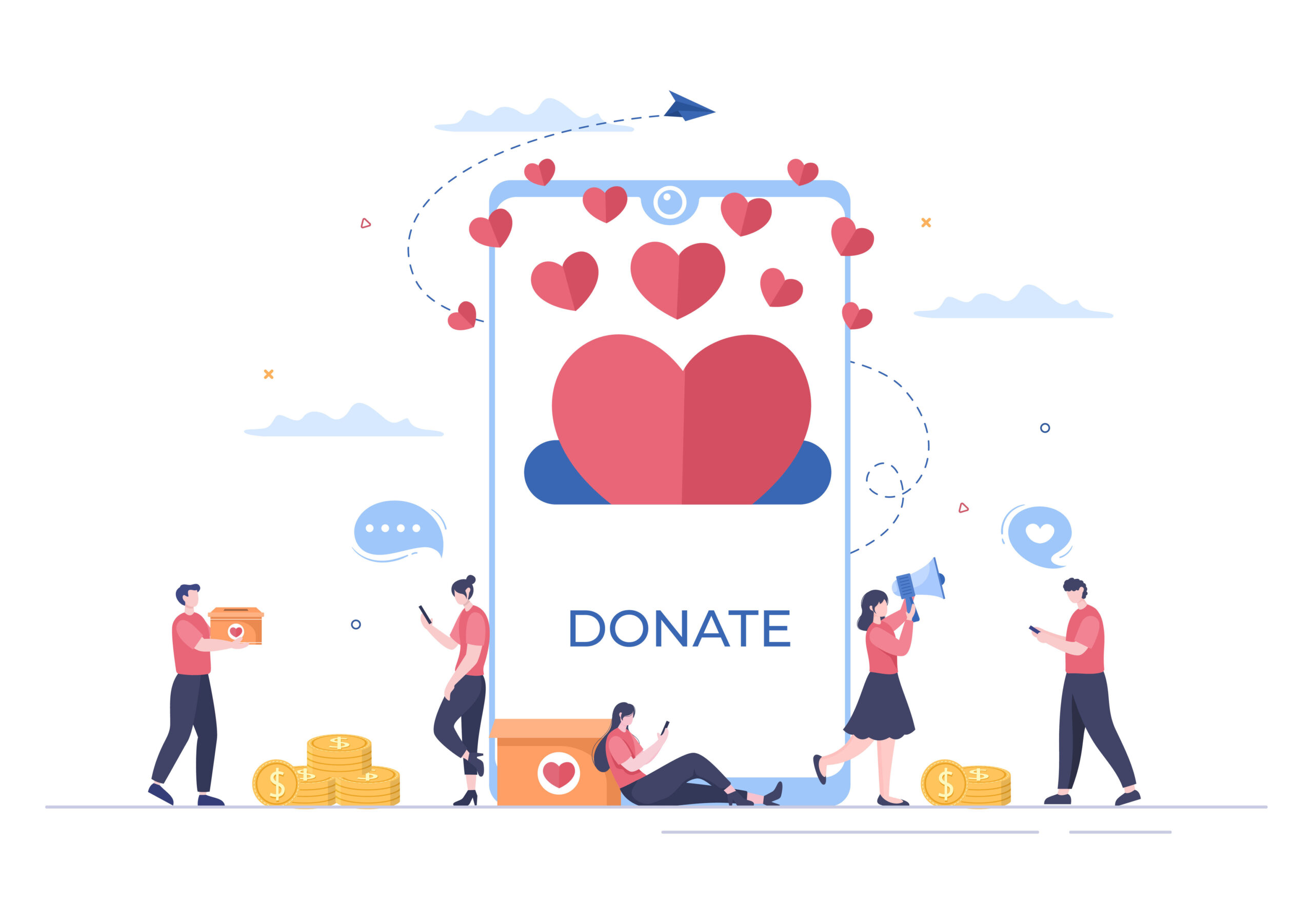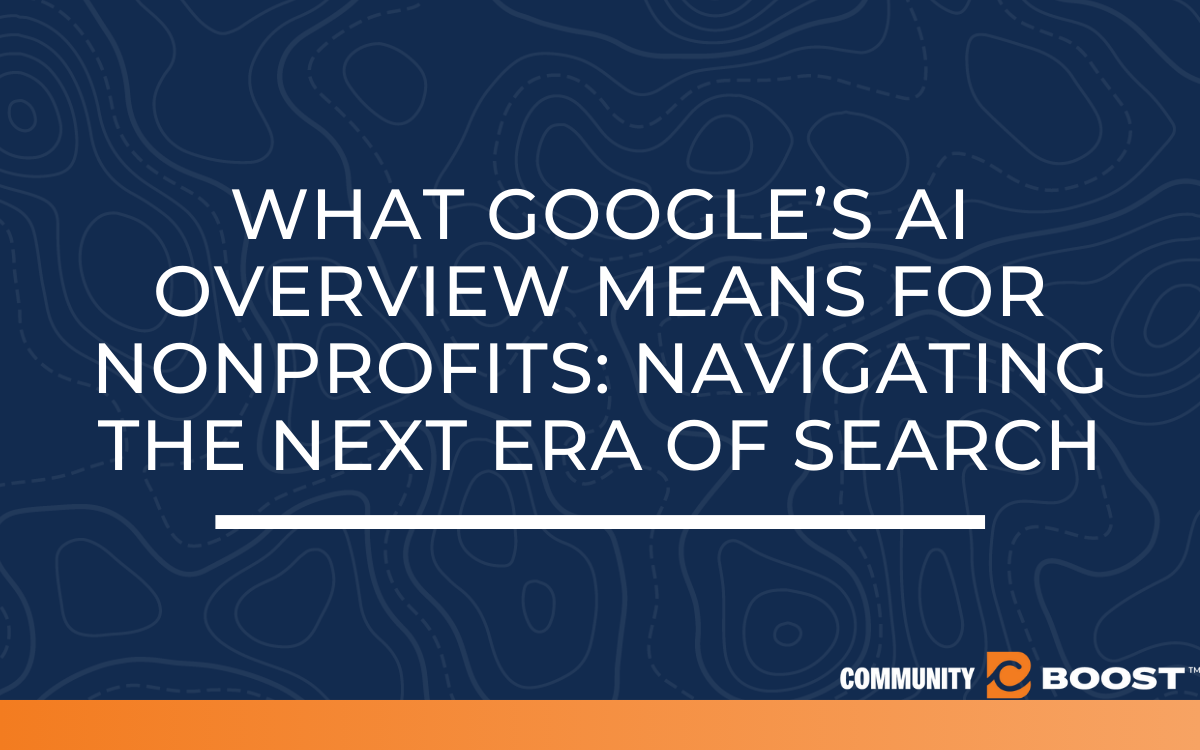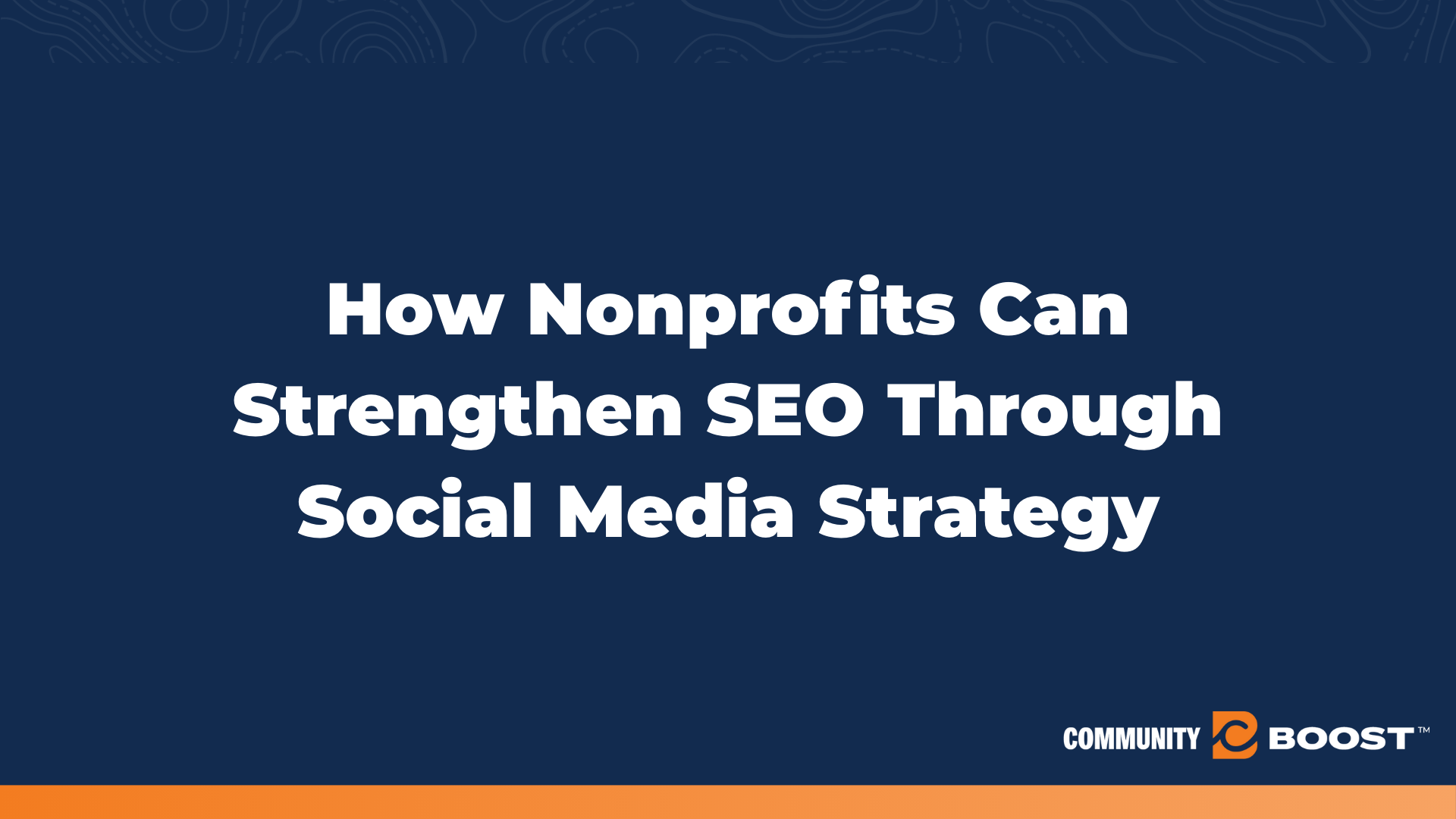Maximizing Year-End Giving: Strategies and Success Stories for Nonprofits
min to read ✭
As the days get shorter and holiday lights start to sparkle, we find ourselves at that special time of year again—year-end giving season. It’s incredible how quickly the year flies by, isn’t it? For those of us in the nonprofit sector, this isn’t just a season of wrapping up; it’s our prime time to connect with donors when their spirit of giving is at its peak.
This post will explore the significance of year-end giving, offering practical strategies, innovative ideas, and real-world success stories to help your organization maximize its fundraising efforts during this pivotal time.
Why Focus on Year-End Giving?
As we’ve seen time and again, the generosity of donors tends to spike during the festive holiday season, offering a unique opportunity for nonprofits to meet, and possibly exceed, their annual goals.
Year-End Statistics
Let’s look at some compelling statistics that underscore the importance of focusing on year-end giving:
- Nonprofits report that between 17% and 31% of their online revenue is generated in December, depending on their cause.
- The 2023 M+R Benchmarks Report reveals that approximately 26% of a nonprofit’s annual revenue is received in December alone.
- GivingTuesday continues to show growth in generosity, with donations in the United States reaching $3.1 billion in 2023, a 0.6% increase from the previous year.
The Psychological and Financial Drivers
It’s fascinating how the end of the year brings out a mix of motivations among donors. On one hand, there’s the practical aspect—tax deadlines are looming. Many donors are looking to maximize their tax deductions, and making charitable donations before the year closes is a smart way to do that. It’s not just about generosity; it’s also savvy financial planning.
On the other hand, there’s the emotional pull of the holiday season. It’s a time of reflection, gratitude, and community. The festive atmosphere and the spirit of giving that pervades these months can significantly deepen the impact of your campaigns. This emotional connection can make people more receptive to your messages, willing to open their hearts and wallets.
Combining these psychological and financial drivers in your messaging can create powerful, resonant campaigns that appeal to both the heads and hearts of potential donors.
Crafting Your Year-End Giving Campaign
We’d like to reiterate that it’s never too early to start thinking about your year-end giving campaign. The best strategies come from a blend of reflection, preparation, and foresight. By starting early, you set the stage for a successful close to the year.
Laying the Groundwork Early
The foundation of a robust year-end campaign all starts with looking back—what worked last year, what didn’t, and how can you build on past successes? Grab your notepad and dive into the data:
- Prepare & Analyze: Take a close look at your previous campaigns:
- What was your average gift amount last year?
- How much did you spend per donor on advertising?
- Which campaigns brought in the most funds?
- What preferences did different donor segments show?
- Evaluate the platforms used: were these campaigns more successful on your website or a separate fundraising page? List the pros and cons of each.
- Identify which channels had the highest conversion rates—was it email, direct mail, social media ads, or perhaps the Google Ad Grant?
With these insights in hand, you can start shaping this year’s campaign:
- Define Your Theme and Goals: What central message will unify your campaign? Set clear, achievable fundraising targets.
- Create and Test Content: Develop your messaging and visuals early. Testing what resonates with your audience gives you time to tweak and perfect.
- Mobilize Resources: Line up incentives like matching gifts, and reach out to potential sponsors to add excitement and momentum to your campaign.
This early groundwork isn’t just about preparation; it’s about setting a trajectory for success that can transform your end-of-year results.
Segmenting Your Audience for Targeted Appeals
Understanding the diverse backgrounds and behaviors of your donors is crucial for crafting messages that resonate. It’s like knowing exactly the right seasoning for each dish you prepare—every flavor counts. For example, millennials might be more engaged by digital campaigns that highlight innovation and impact, using platforms like Instagram or Twitter. On the other hand, baby boomers may respond better to more traditional, heartfelt appeals through direct mail or emails that recount the tangible outcomes of their contributions. By tailoring your messages to fit the preferences of each donor segment, you enhance the effectiveness of your campaign and deepen connections with your audience.
Innovative Year-End Giving Campaign Ideas
Digital and Social Media Strategies
In today’s digital age, social media platforms such as Facebook and Instagram are not just about sharing updates but are powerful tools for engaging with donors at every stage of their journey. By strategically using these platforms, you can guide potential supporters from initial awareness to a donation.
For instance, leveraging paid social media can help you effectively segment and target your audience. It allows for a tailored approach where you can adjust content, copy, and creatives based on where your audience is in the donation process. It’s crucial, especially during the competitive year-end giving season, to maintain a presence that aligns closely with your mission and stories, rather than just making an ask. Consider setting up dedicated groups and events on Facebook or engaging followers through regular Instagram or Facebook Live sessions to keep the momentum going.
Moreover, embracing current digital trends can significantly boost your campaign’s reach and effectiveness. Think about partnering with influencers, especially micro and nano influencers who are not only passionate about causes but also have a dedicated following that trusts their recommendations. These influencers can amplify your message and help you reach a broader audience.

Also, explore new platforms and features like TikTok, Instagram Reels, and Stories. These tools are perfect for nonprofits willing to innovate and test new approaches to storytelling and engagement. By staying adaptable and forward-thinking, your nonprofit can capture the attention of donors in a crowded digital landscape and drive your year-end fundraising to new heights.
Using Storytelling to Drive Donations
Storytelling is a powerful tool in fundraising, capable of turning abstract statistics into heartwarming, compelling stories that resonate deeply with donors. To craft narratives that move your audience to action, focus on the individuals or communities your organization helps. For example, share the journey of someone like Kevin, whose life was transformed by your support, and let donors see the real-world impact of their contributions.
Incorporating matching gift opportunities into your stories can also amplify their effectiveness. Phrases like “Your donation doubled” not only offer tangible value but also create a sense of urgency and significance around the act of giving.
Don’t shy away from emotional appeals. A sentence like, “Too many people die from cancer each year. Donate to give a future to more families this holiday season,” can stir powerful emotions and spur action. By weaving these elements into your campaign’s narrative, you engage donors not just with logic but with their hearts, making a compelling case for why they should support your cause right now.
Effective Execution of Your Campaign
We’ve explored a lot together—from honing in on our target audiences with just the right messages to embracing cutting-edge digital strategies. With all these pieces—from rich data insights to creative content—already shaping our campaign, it’s time to bring it all together. Let’s see how a well-planned timeline and multi-channel approaches can help us steer all these efforts toward a seamless and impactful campaign finale.
Implementing a Comprehensive Timeline
Here’s a streamlined yet thorough roadmap to guide you from the early stages of planning right through to the final push and beyond.
- Sept – Oct: Prepare & Analyze
Start by diving into past data. What worked? What didn’t? Use these insights to define your campaign’s theme, set realistic goals, and begin crafting your content. This is also the time to gather resources, like incentives and sponsors. - Oct – Nov: Pre-Wire & Gratitude
Before the big asks, warm up your audience. Show appreciation to existing donors and introduce new potentials to the impact of their contributions through targeted ads and heartfelt messages. This phase is about building relationships and setting the stage for direct asks. - Nov: Full Launch (#GivingTuesday)
Use Giving Tuesday as a springboard for your campaign. Ramp up your social media efforts, share stories of impact, and really drive home the importance of giving. This is your chance to make a big splash and capture the attention of your community. - Early – Mid December: Engage
Keep the momentum from Giving Tuesday going. Continue engaging with your audience, reminding them of the difference their contributions can make. This is the time to be creative in how you keep your audience involved and invested. - End of December: Big Finish
As the year wraps up, this is when you pull out all the stops. A third of all giving happens in December, with a significant portion in the final days. Emphasize urgency and ease of giving during this peak time to maximize donations. - January: Follow-Up & Gratitude
The campaign may be over, but your work isn’t. Show your donors how much you value them; share the successes and the tangible impacts of their donations. This is crucial for turning one-time givers into lifelong supporters. - February: Recurring Giving
Capitalize on the goodwill you’ve fostered by encouraging new and existing donors to commit to recurring gifts. Continue to engage them with compelling stories and updates about how their ongoing support will make a difference.
Implementing this timeline with a focus on thoughtful preparation, continuous engagement, and heartfelt gratitude will help ensure that your year-end campaign is as successful as possible.
Multi-Channel Fundraising Approaches
Embracing a multi-channel approach is like conducting an orchestra—each instrument plays a crucial part in creating a harmonious outcome. By integrating email, direct mail, and various online platforms, you can engage your donors more effectively and create multiple touchpoints that lead to increased contributions.
Email is a cornerstone of any digital campaign, offering a direct line to your donors’ inboxes where personalized appeals can be made. It’s intimate, customizable, and essential for nurturing relationships.
For digital outreach, investing in paid ads is key. Even a modest budget of $500 to $1,000 per month can significantly amplify your reach. Platforms like Meta Ads, Google Search Ads, and YouTube offer targeted options to connect with specific audiences:
- YouTube and Display Ads are cost-effective ways to engage large audiences. YouTube’s in-stream ads, which play before videos, are only charged if viewers watch past a certain point, making them an efficient use of your advertising dollars. Display ads, akin to digital billboards, can increase awareness and facilitate multiple touchpoints without directly engaging.
- Search Advertising, including Google Ad Grants and paid search, enhances your visibility online. These tools help ensure your nonprofit appears at the top of search results, capturing attention at critical moments when potential donors are motivated to give.
Onsite Conversion Design plays a vital role in turning this traffic into donations. By optimizing your website’s design, you can guide visitors smoothly from landing pages to donation forms. Techniques like dynamic pop-ups for donation matches or urgent calls to donate in the final days of the year can make a big difference in conversion rates.
By orchestrating these channels effectively, your campaign can reach donors wherever they are, making it easy and compelling for them to support your cause.
Measuring and Adapting for Success
It’s important to acknowledge that we don’t always get it right the first time. There’s always room to improve, which is why focusing on key metrics provides critical insights into both your successes and areas for enhancement. Establishing these metrics not only helps gauge the current campaign’s performance but also sets the stage for future refinements.
Key Metrics to Monitor:
- Fundraising Metrics: Track the number of gifts, average donor amount, cost per donor, donor retention rate, and total funds raised. Incorporating donor data from your advertising tools will give you a clearer picture of your campaign’s reach and impact.
- Marketing Metrics: Pay attention to conversion rates, Return on Ad Spend (ROAS), Return on Investment (ROI), landing page views, bounce rates, cost per conversion, and the frequency of engagements. These indicators will help you understand how effectively you are attracting and maintaining donor interest.
- Project or Program Metrics: Monitor the number of beneficiaries served, beneficiary satisfaction rates, and the number of hours dedicated to each project. This helps validate the impact of your efforts beyond just financial measurements.
Continuous Testing and Adaptation
To refine your strategies, employ tools like Google Tag Manager and Google Optimize for rigorous testing of your website and marketing funnels. This approach allows you to experiment with different versions of your campaign messaging to see what resonates best with different segments of your audience, such as new visitors versus returning donors.
Setting Up a Strong Analytics Foundation
Implement Google Analytics 4 for comprehensive tracking and analysis of your online activities. Ensure accurate conversion value tracking is in place to measure the actual value of each transaction. Additionally, consider setting up offline conversion tracking through the Conversion API to capture data on donors who may see your online ads but choose to contribute through other channels.
By continuously measuring and adapting based on real-time data, you’ll lay a stronger foundation for future fundraising efforts. Remember, the goal is to learn from each campaign and progressively improve your engagement and fundraising strategies.
Demonstrating Impact: Case Studies
At Community Boost, success stories aren’t just occasional highlights—they’re what we do. Here’s how we’ve helped various nonprofits transform their missions through strategic digital marketing. Each of these case studies showcases a different organization, revealing the unique challenges they faced, the innovative strategies we employed, and the impressive outcomes that propelled their missions forward.
San Diego Blood Bank
- Goal: Increase blood donation appointments through diverse digital channels.
- Impact: Achieved 23,357 scheduled appointments, potentially saving over 70,000 lives.
- Quote from Client: “Before working with Community Boost on our digital initiatives, we had difficulty executing tactics while proving the value of our online marketing activity. They helped prioritize and focus our efforts on what activity had the most benefit, ultimately leading to great success on each of our chosen platforms.” – Javier Castillo, VP of Marketing
The Foster Alliance
- Goal: Increase awareness and engagement to support the foster care community.
- Impact: Raised over $125,300 with a return on ad spend of over 2,000%.
- Quote from Client: “After working with Community Boost for several years through two organizations, a rebrand, and the constant changes in the digital advertising landscape, we believe they are a vital partnership to organizational growth and the communities we serve.” – Bethany Eggleston, VP of Development and Marketing
Per Scholas
- Goal: Expand access to tech education and career opportunities.
- Impact: Generated 5,054 leads and 5,016 applicants, a 30% increase in digital leads year over year.
- Quote from Client: “Working with Community Boost has been a game-changer for our nonprofit. Their strategic approach to digital marketing has increased our online visibility and driven tangible results, helping us to triple our participant applicant numbers.” – Jackie Anderson, Vice President, National Recruitment
Running Strong for American Indian Youth
- Goal: Build an online community of advocates and increase fundraising
- Impact: Expanded their email list significantly and raised over $41,000 from 663 donations.
- Quote from Client: “In one short year, Community Boost has grown our subscriber list by the thousands… While we know our programs, Community Boost best knows how to deliver the relevant content on our programs to audiences we do not have the capacity, nor knowledge, to reach. The donor acquisition and retention have far outpaced our ad and agency investment. I genuinely believe in Community Boost as an integral partner in expanding our reach and, thus, our ability to deliver our programs in an ever growing manner. ‘If you build it, they will come.’ Community Boost is doing just that for our charity, and they are hitting home runs with every play at the plate.” – Anita Uyehara
For more successful stories like these, feel free to explore our case studies here.
Key Insights
We’ve covered a lot of ground today, from laying the groundwork early for your year-end campaigns to implementing innovative digital strategies and making sure we’re measuring everything that matters. Each step is crucial for creating a campaign that not only reaches but resonates with your audience, turning potential interest into tangible support.
Now’s the perfect time to kickstart your year-end campaign planning. If you’re feeling a bit overwhelmed or just looking for a little expert guidance, Community Boost is here to help elevate your digital marketing efforts.
Let’s wrap up 2024 on a high note. Contact Community Boost today!





